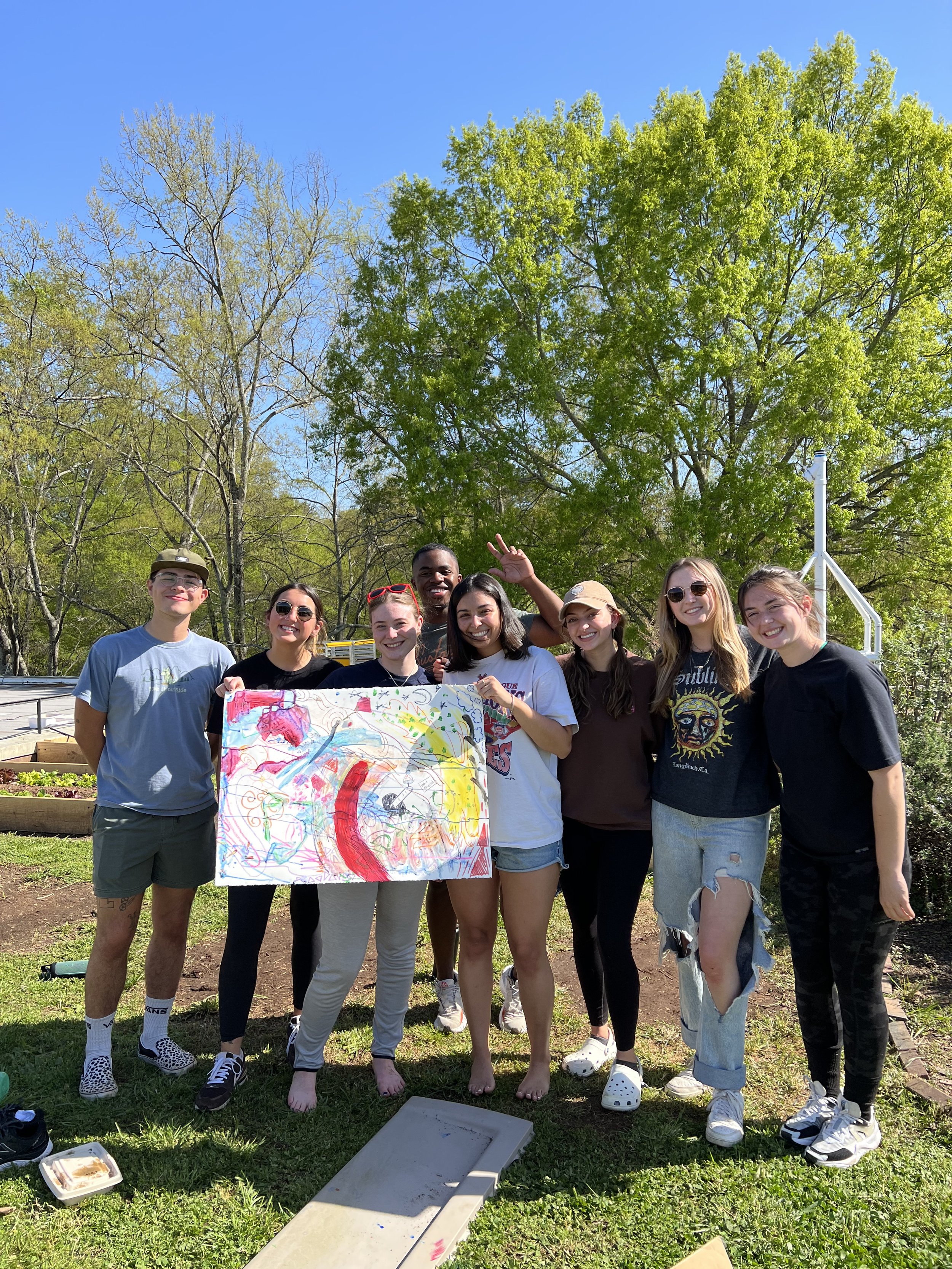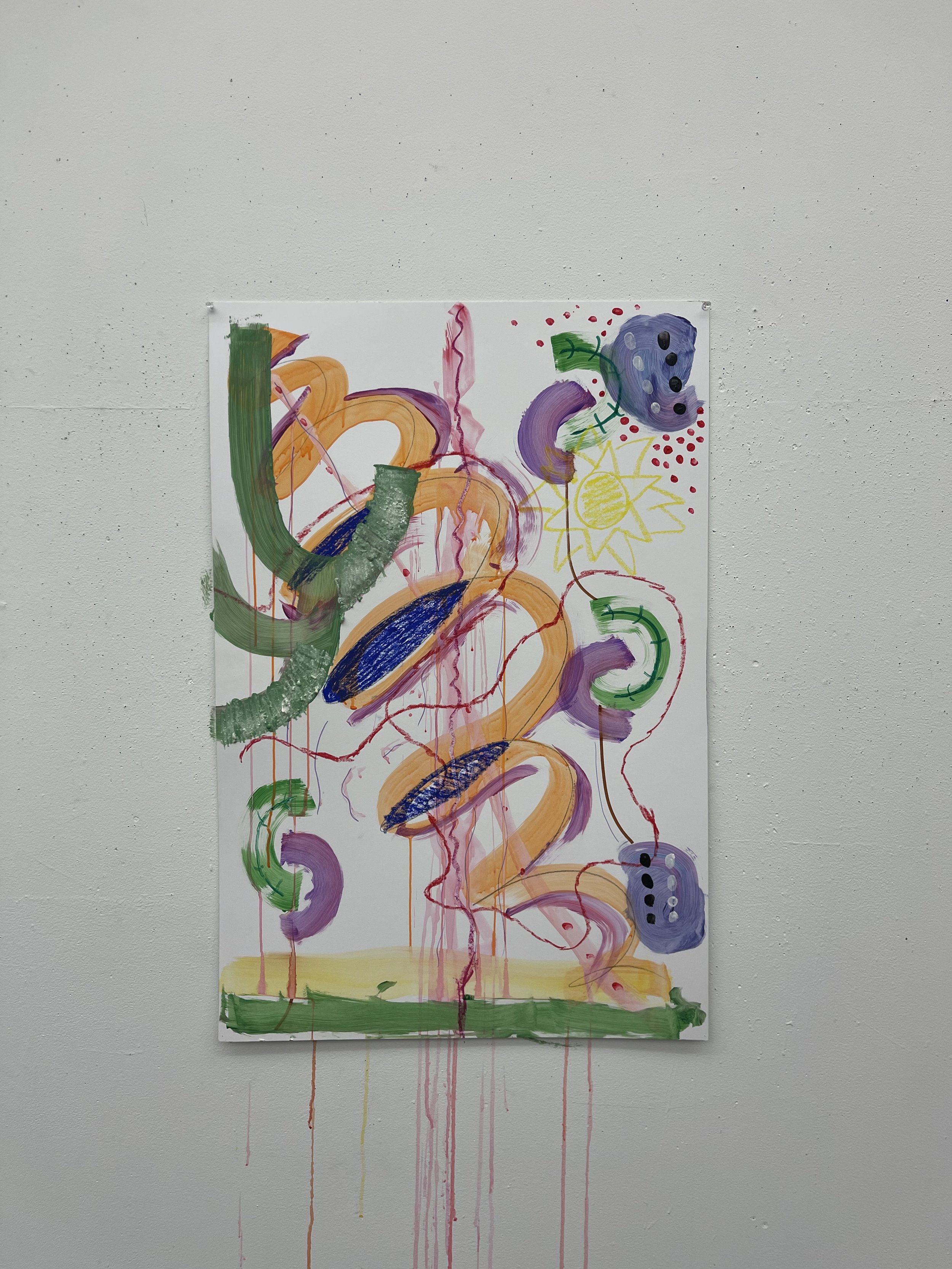
Artist in Residence 2021-2022 Recap
Creative-Strategy workshops were a way to embolden students and staff to engage in creative ideation, the process of play, and the practice of documentation. Starting the year following along with the pollinator project, I interviewed community members, researchers, conservationists, and professors. Interview after interview I quickly learned that the themes were always the same: the importance of interdependence, the cyclical nature of all things, and the quest to solve complex problems. These themes that are critical to research, conservation, and pollination struck a chord. I am not a scientist or policy maker, I am an artist. I cannot speak to the full breadth of these topics, but I can create a culture of reverence and a space for dialogue. In my second semester I focused on leading a series of creative workshops to engage this community with the arts, in the hopes of bolstering them in the areas I considered most important for sustainable work.
Site Speciifc
Site Specific
It is easy in these times to feel like productivity is the key to success, but so much of what will make our work meaningful, in our careers and personal life, is creativity. A lesson that has been hard for me to learn is that productivity is often counterintuitive to creativity. We cannot be expected to constantly overload ourselves with work and have the mental capacity for reflection, observation, and play. Have you ever noticed that your best ideas come when you least expect it? Or when you were not trying? That is because instead of searching for ideas you just observed what came naturally. Although I can attest that art and creativity can feel like magic it is not a God given gift, rather a process and practice anyone can be in conversation with. What I want to do is walk you through one way you can engage in a creative process practice that requires rest, quiet, and play. Not to mention the best part is that it can be done from anywhere! Site specificity, silent walk, observational mindfulness are all names that can be attached to this process, but the goal is to put your phone away, don't talk, and just be in your given space. What do you see? What do you hear? How do you feel? What demands your attention? What is hiding from you? Where does your mind wander? Take in your surroundings and take notice of what you see, but also how you feel in body and mind. It is okay for your mind to wander (observe that!) or to feel foggy. There is no correct way to exist in this space. When done with this time I challenge you to document your takeaways on paper. This could be a drawing of what you saw, words of how you felt, colors to express emotion (this is not about artistic skill) whatever way you want to convey your emotions during this time. Do it. The hardest part of being creative is not usually coming up with ideas but translating ideas and emotions into a documentation for others to experience. It is this translation that daunts us from expressing ourselves, not the lack of creative thought. We all have the capacity to be creative. I hate hearing, “but I'm not creative,” everyone absolutely is. I understand in professional, academic spheres living a speedy, “productive” life feels like the only path to success. I can guarantee that path is tempting but it can also cause us to brashly react to our environment and feelings. When we take the time to reflect and engage with ourselves and surroundings, we will be able to respond intelligently. An individual who responds not reacts is absolutely a better employee, friend, child, parent, partner, leader, and the list goes on. Even if this task feels silly to you, I urge you to lean in because so much of what society deems frivolous is critical.
Feedback of Site-Specific
In the ‘21-’22 school year I was able to conduct the site-specific workshop 4 times at 2 different locations. What piqued my interest the most was how the environment impacted the documentation. The first go at the trial gardens was in a time when the gardens were flourishing with flowers and greenery. The second time around was during winter and it was very dead and barely any growth. What I noticed was that the first time the participants were increasingly literal with their documentations, drawing the flowers they saw, for example, whereas the second became much more introspective because there was less in their environment that was as visually interesting. Although both had literal interpretations of their time in the gardens it was interesting to see visual stimulus played a role in how they viewed the assignment. For the second two workshops at the memorial garden I felt the responses were much more introspective than external. What was mentioned multiple times during these events were that finals were coming up and the end of the semester was causing a lot of stress. It seemed that the stress they were carrying about these events was a common theme among their documentation. What I gleaned from these exercises is that there are so many factors both controllable and not that are going to impact others’ insights from it. What I would do differently going forward would be holding these in more starkly different locations and analyzing their documentation on my own for nuance and trends.
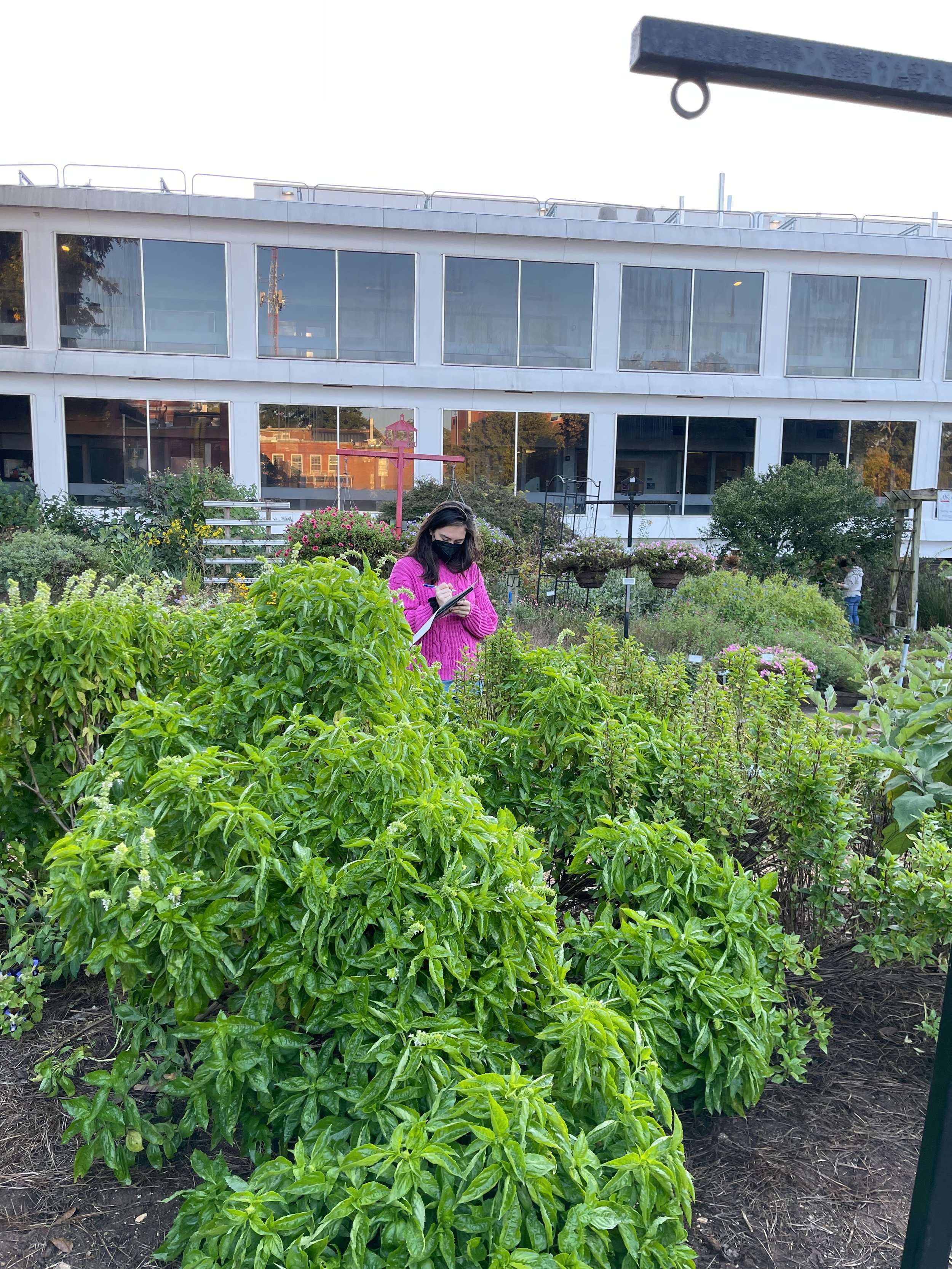
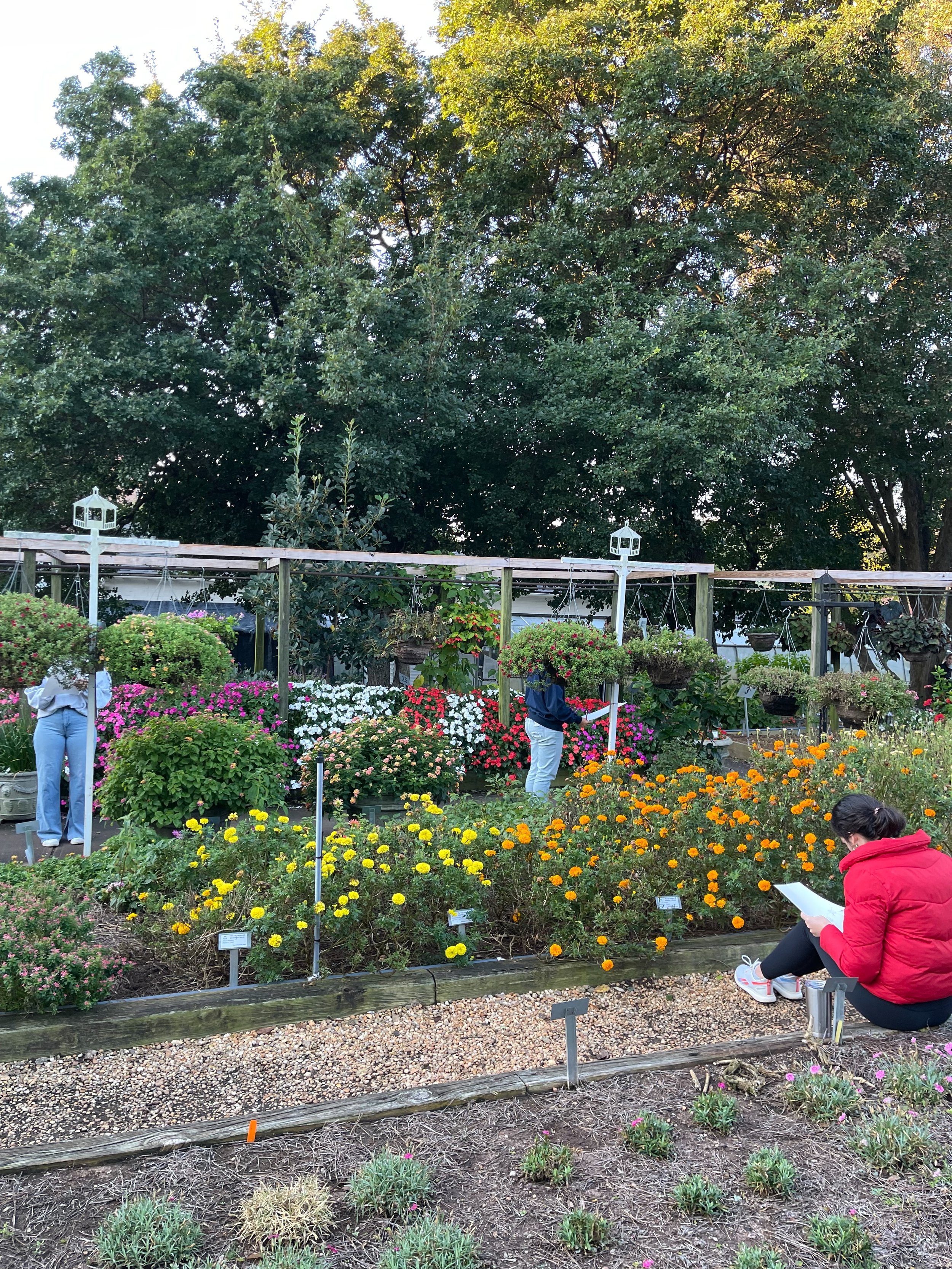
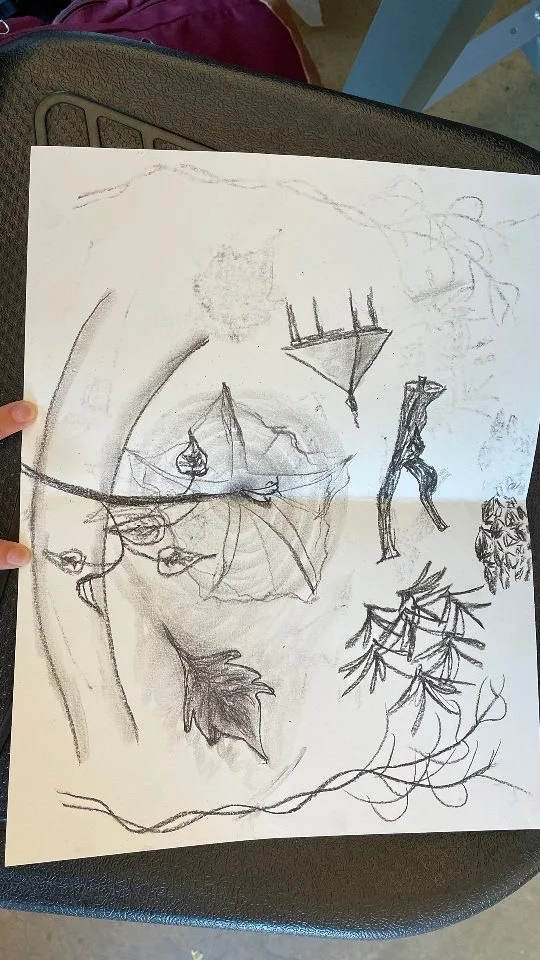


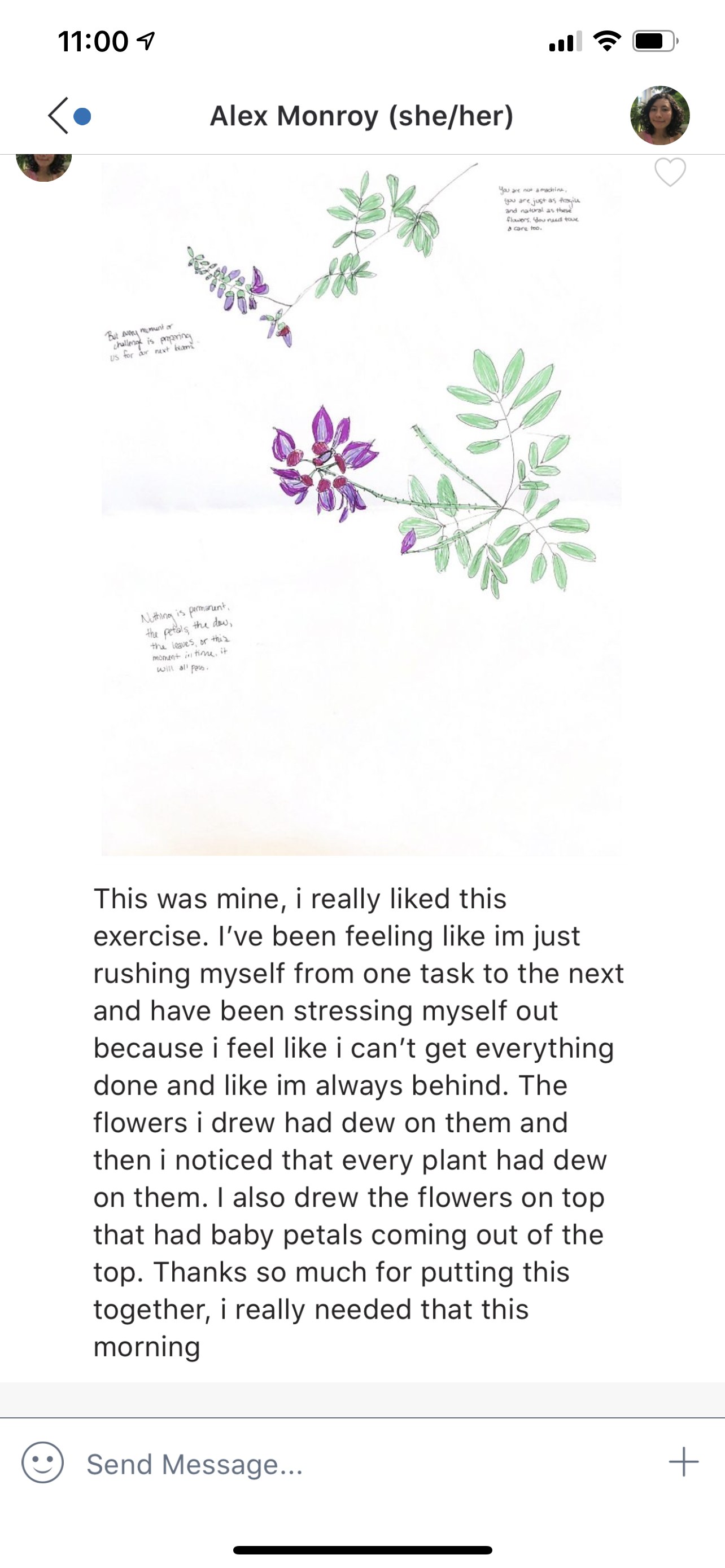
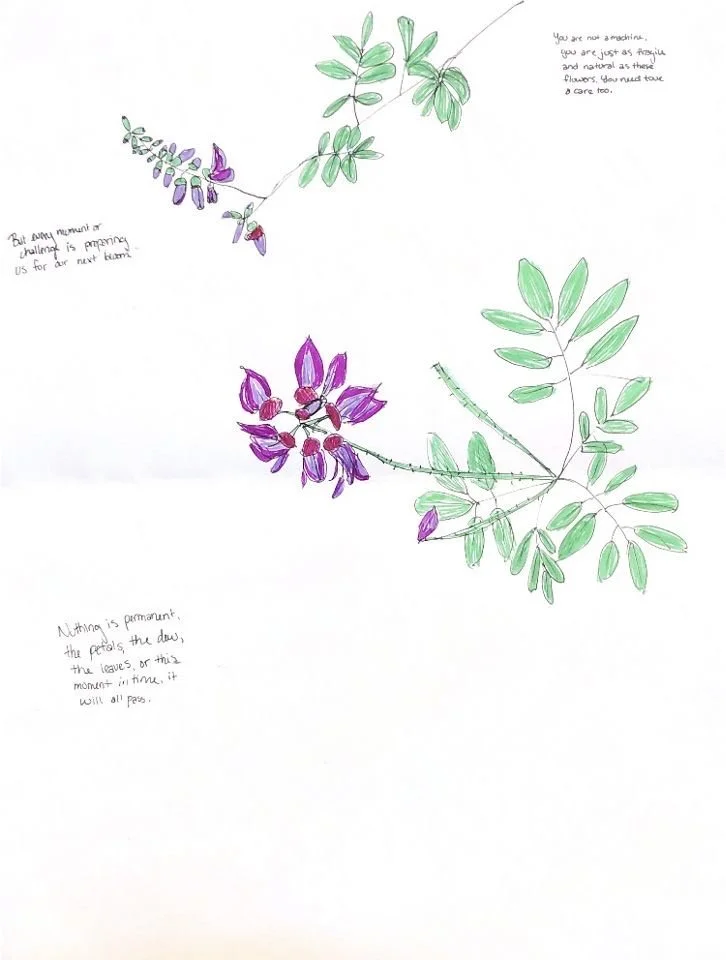
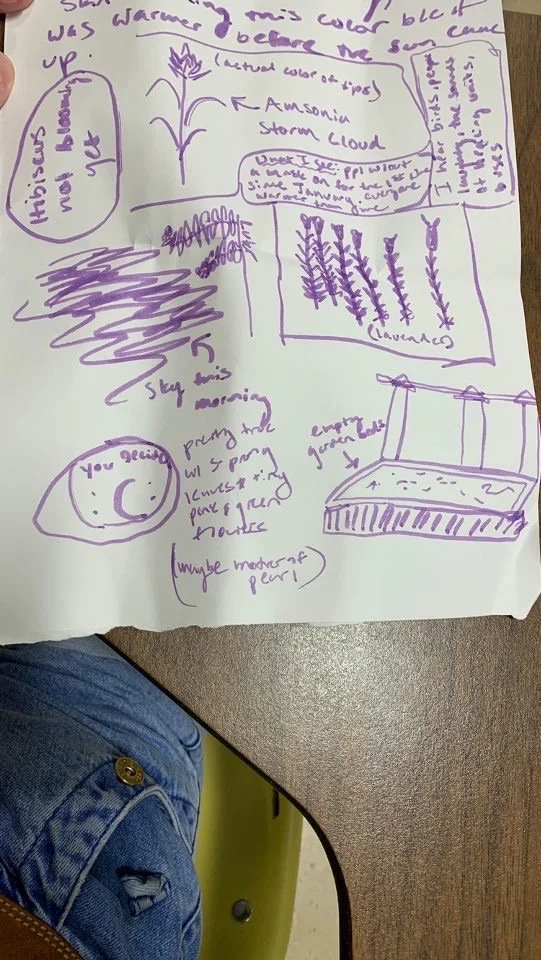

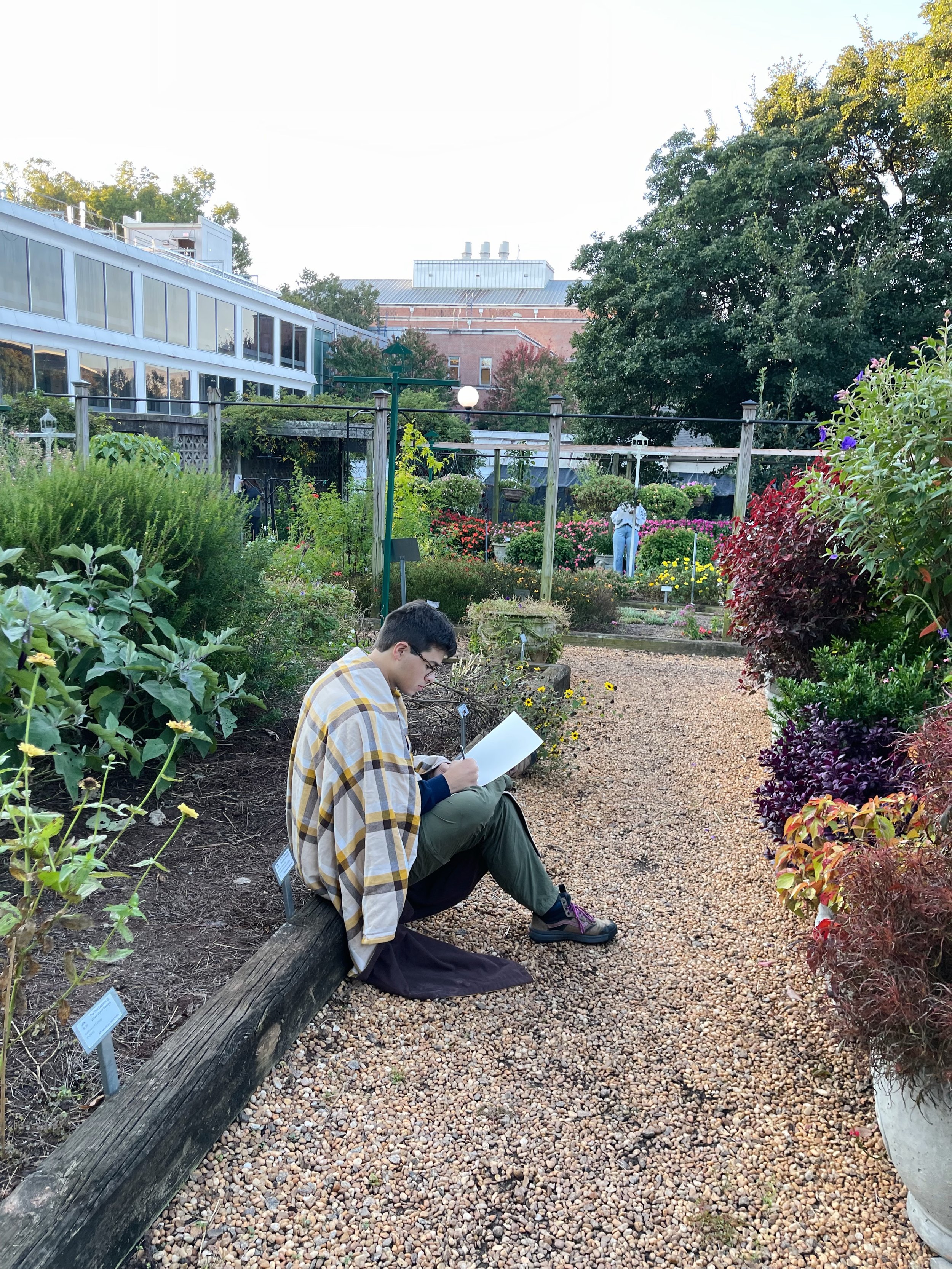
Mark responding to Mark
“Mark Responding to Mark”
In this exercise we are exploring collaborative making. There will be one big piece of paper and a variety of tools to make marks. Each participant will have the ability to make a mark and then it will be up to the next to respond with another. The goal here is to work and rework a project using others input. This means covering up what others put down or maybe building upon what they started, you want to focus on the big picture and how each mark impacts the overall composition of the paper. This is a no stakes exercise that will hopefully elevate the way you view working with others. No matter what field you plan to go into or whatever change you want to make in this world: someone has made progress that you will build on to. It is a humbling and relieving fact to accept. We never accomplish anything alone, whether we are given direct help or we are building upon research that has been conducted for hundreds of years. Every move we make, every change we enact, and every emotion that arises is all a response to the world around us. Now we can ignore that fact or we can attune our minds to a greater awareness of it. The choice is ours to make. I hope you all will take what we practice here so the next time you are in a conversation or working on a group project you will see how everyone is contributing a mark and what’s important is how you choose to respond to it.
Feedback of Mark Responding to Mark
In the ‘21-’22 school year I was able to conduct the mark responding to mark workshop 2 different times. The nature of this exercise was different from the site-specific because it was one that required collaboration on one form of documentation. The first time conducting this workshop was in winter, indoors, and with a group that were not super familiar with one another. This first go around I found it difficult to engage with the group due to their relative timidness with one another and this exercise works best with a dynamic dialogue. As each individual made their mark, my first noticing was that everyone mainly stuck with abstract marks and uses of color to complete the composition. A note that was given to me after the event was that I did not ask the participants to explain why they made each mark in response to the previous ones, which I believe would have majorly affected how they made marks and given a better opportunity to practice the articulation of ideas. In the second iteration of this exercise the circumstances were entirely different: a very warm day atop the green roof, for an intern social. The conditions of this event were absolutely present in the final product. Once again being surrounded by such a lively environment inspired the participants to make their marks in the form of representational imagery. I also saw how working with a more well acquainted group allowed for the dialogue to flow more seamlessly. The addition of mandating that each participant explain his or her mark proved to be a critical improvement in the quality of the discussion and to synthesize the theme of this practice. If I were to conduct this exercise in the future I would work to have a larger variety of mark making tools to allow more opportunity for a range of tones and color palettes.

